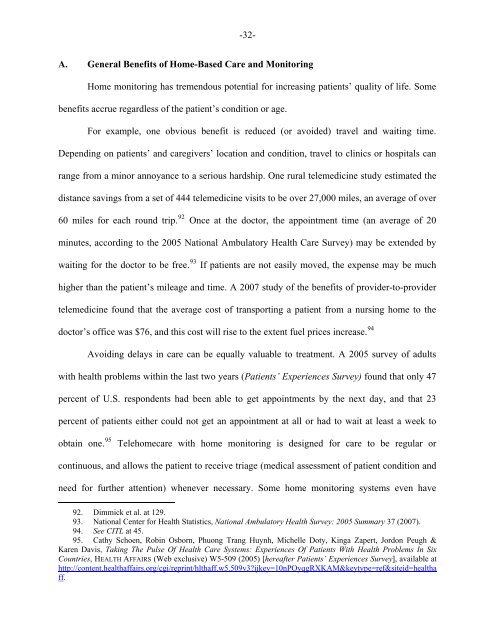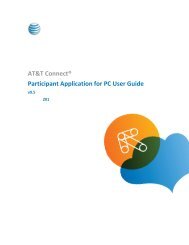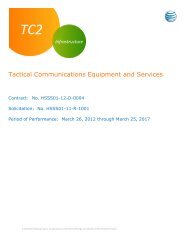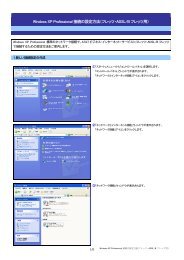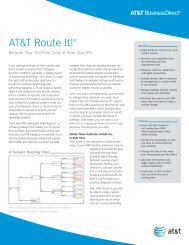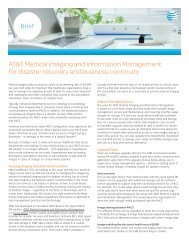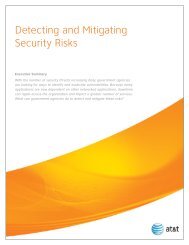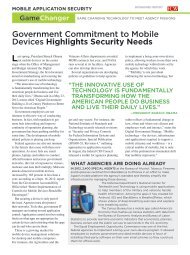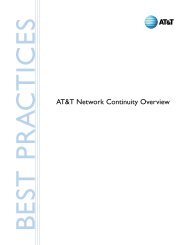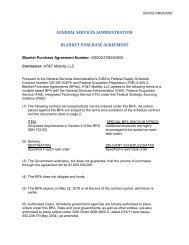VITAL SIGNS VIA BROADBAND: - Broadband Illinois
VITAL SIGNS VIA BROADBAND: - Broadband Illinois
VITAL SIGNS VIA BROADBAND: - Broadband Illinois
Create successful ePaper yourself
Turn your PDF publications into a flip-book with our unique Google optimized e-Paper software.
-32-A. General Benefits of Home-Based Care and MonitoringHome monitoring has tremendous potential for increasing patients’ quality of life. Somebenefits accrue regardless of the patient’s condition or age.For example, one obvious benefit is reduced (or avoided) travel and waiting time.Depending on patients’ and caregivers’ location and condition, travel to clinics or hospitals canrange from a minor annoyance to a serious hardship. One rural telemedicine study estimated thedistance savings from a set of 444 telemedicine visits to be over 27,000 miles, an average of over60 miles for each round trip. 92 Once at the doctor, the appointment time (an average of 20minutes, according to the 2005 National Ambulatory Health Care Survey) may be extended bywaiting for the doctor to be free. 93 If patients are not easily moved, the expense may be muchhigher than the patient’s mileage and time. A 2007 study of the benefits of provider-to-providertelemedicine found that the average cost of transporting a patient from a nursing home to thedoctor’s office was $76, and this cost will rise to the extent fuel prices increase. 94Avoiding delays in care can be equally valuable to treatment. A 2005 survey of adultswith health problems within the last two years (Patients’ Experiences Survey) found that only 47percent of U.S. respondents had been able to get appointments by the next day, and that 23percent of patients either could not get an appointment at all or had to wait at least a week toobtain one. 95Telehomecare with home monitoring is designed for care to be regular orcontinuous, and allows the patient to receive triage (medical assessment of patient condition andneed for further attention) whenever necessary. Some home monitoring systems even have92. Dimmick et al. at 129.93. National Center for Health Statistics, National Ambulatory Health Survey: 2005 Summary 37 (2007).94. See CITL at 45.95. Cathy Schoen, Robin Osborn, Phuong Trang Huynh, Michelle Doty, Kinga Zapert, Jordon Peugh &Karen Davis, Taking The Pulse Of Health Care Systems: Experiences Of Patients With Health Problems In SixCountries, HEALTH AFFAIRS (Web exclusive) W5-509 (2005) [hereafter Patients’ Experiences Survey], available athttp://content.healthaffairs.org/cgi/reprint/hlthaff.w5.509v3?ijkey=10nPOyqgRXKAM&keytype=ref&siteid=healthaff.


